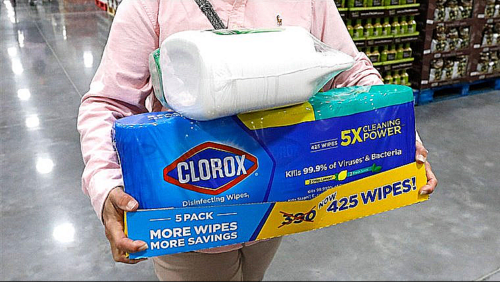Surprisingly, many folks don’t have a clue on how to properly disinfect their home after caring for a loved one, who has battled a contagious illness like a virus. After getting the person healthy, your next responsibility is to prevent the illness from spreading to others in the home. Sure, there is frequent hand washing but some viruses can live on hard surfaces for up to two weeks.
Here are some tips on how to properly sanitize your home after a contagious illness:
First of all, always follow the instructions on a disinfecting agent’s label for safety’s sake. Never mix disinfecting cleaners with other cleaning products like ammonia because toxic fumes can result in serious injury and even death!
If you prefer to use a homemade cleaner, consider this one:
- 5 tablespoons (1/3 cup) bleach per gallon of water (the solution should be mixed fresh every day because chlorine bleach can lose its cleaning properties when exposed to air for long periods)
- 4 teaspoons bleach per quart of water
If you’re using a commercial cleaner, follow the label directions and make sure you have good ventilation as you use the product. For a homemade cleaning solution, dip a clean white cloth or paper towel into the bleach-water solution and apply to the surface that needs cleaning. Make sure to test the solution on an inconspicuous spot first to determine, if it is safe to use as not every type of fabric can withstand chlorine bleach. Let it stand for at least three minutes and then rinse the surface with plain clean water. The bleach solution can also be used in a spray bottle.
While disinfecting, use a paper towel that can be tossed away or a cotton cloth that can be washed after each use. Sponges should not be used for cleaning because they can harbor bacteria in the crevices. For items such as remotes, use a cotton swab dipped in a disinfectant to get into tight areas.
Electronics
Consider putting a cover on electronics that can be wiped. Follow manufacturer’s instruction for cleaning and disinfecting. If no guidance, use alcohol-based wipes or sprays containing at least 70% alcohol. Dry surface thoroughly.
Bedrooms
After battling an illness that has someone bedridden most of the time, the germs and bacteria can remain in the fabric of the bed linens so disinfection is key. Sheets, comforters, pillowcases, PJ’s, nightgowns, robes, stuffed animals–everything needs to be laundered (check the manufacturer’s directions for some items). When removing the soiled items, make sure to wear gloves. Do not let the items touch your face or body. Do not shake dirty laundry! If you throw the items in the hamper, wipe it down with a disinfectant after emptying it. Swipe phones, remotes, computers, light switches, doorknobs and bedside table items with the disinfectant. For soft areas like carpet, rugs, and drapes, use cleaners that are appropriate for these items.
Bathroom
Bathrooms are germ havens! Vomiting and diarrhea can leave tiny particles on surfaces that must be sanitized. Disinfect toilet flushing handles, seats, and lids. Clean your sink, countertop, faucet handles, light switches, door knob, floor, and anything handled during the illness like toothpaste tubes. Designate towels for the sick person and afterwards launder in hot water and dry at a high heat to kill bacteria. After the illness, throw away the person’s toothbrush and sanitize its holder.
Living room
If the infirmed individual wants to spend time in the living room, cover the furniture with washable sheets or blankets and change frequently. Remove decorative pillows or cover with washable pillowcases. Frequently swipe phones, remote controls, light switches, and doorknobs. If playing cards or a board game is played, be sure to disinfect the items touched. And don’t forget to swipe table surfaces.
Kitchen
A sick person with a contagious illness should never prepare food for others! Even if they’re fanatical with handwashing, viruses like the norovirus can still be easily spread.
All utensils and dishes used by the sick person should be sanitized in high heat if placed in a dishwasher, or washed in a disinfectant solution made of bleach and water (1/2 cup of chlorine bleach to one gallon of water). Swipe tables, chairs, cabinet and drawer hardware, sink, faucet handles, light switches, stove knobs, with a disinfectant.
Car
Drivers and passengers can leave behind viruses in a car. Be sure to use a disinfectant that is safe for your leather or fabric upholstery. Wipe down the steering wheel, inside and outside door handles, dashboard controls, garage door openers, and your keys.
